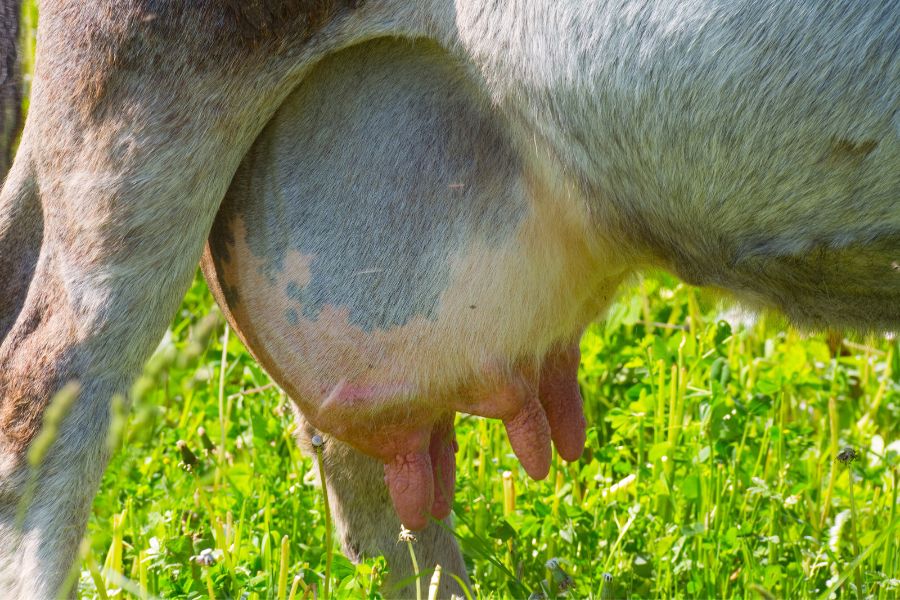Correlation Between Cow Udder Size And Milk Yield
Dairy farming has become a scientific endeavor, and much of what previous-era farmers knew intuitively is being proven by science. One such factor is the correlation between the size of a cow's udder and the milk yield.
Many studies have shown that, generally, larger udders produce more milk. Scientific studies have been done on common dairy breeds and non-traditional breeds such as Zebu. The research studies show that cows with the best milk yields have large udders.
The correlation is not surprising when considering the anatomy and function of a cow's udder. It is necessary to understand how an udder works to grasp these concepts.
Udders are glands that contain cells known as alveoli which are responsible for milk production. Alveoli increase in number for at least the first five lactations leading to a bigger udder.
The alveoli epithelium (membrane) converts nutrients into milk which is collected in the alveoli lumen. Muscles surrounding the alveoli contract forcing the milk into the gland or mammary cistern, which in turn leads to the teat cistern.
Larger udders usually have more alveoli and bigger cisterns, resulting in a higher milk yield.
When Does A Big Udder Not Produce More Milk?

Some large udders have high amounts of fatty (adipose) and connective tissue. As a result, there is less milk-secreting tissue in these udders than expected, and the milk yield is lower.
Udders are held in place by several suspensory ligaments, which bear enormous strain from the weight they must support. In cows with weak suspensory ligaments, the udder drops down and may be described as pendulous.
The udder looks very large, but this is not an accurate impression and does not influence milk yield. Instead, the udder is simply hanging low and will be problematic for the cow, calf, and farmer.
Can A Cow's Udder Be Too Big?
Cows that have excessively large udders can be cause for concern. Udders that end below the cow's hocks are vulnerable to injury. As a result, Thorns, sticks, and other debris on the ground may injure the udder.
Some cows have udders that are so large the cow accidentally steps on their own teat. Rips and cuts on the udder or teat can cause devastating injuries that make the cow unable to be milked.
An udder dragged through muddy areas is also prone to infections and mastitis. In addition, pre-milking cleaning a large udder hanging low to the ground can be difficult and result in contaminated milk.
Low-hanging udders with large teats often do not fit comfortably in the milking machine. This is time-consuming for the farmer and makes the cow prone to mastitis.
Excessively large udders that hang below the hocks make it difficult for calves to nurse. The udders are usually dirtier, predisposing the calf to bacterial infection and diarrhea.
Why Is A Cow's Udder Bigger At The Back?

The rear half of a cow's udder is usually clearly bigger than the front half. This is because more milk is obtained from the back two quarters than the front two. Sixty percent of the milk is contained in the rear half and forty percent in the front half.
Udder Conformation Is As Important As Size
Dairy farmers become experienced in assessing the conformation of a cow's udder as it is crucial in milk production and the cow's health.
The following points are assessed in udder conformation:
- Udder depth refers to how high or low the udder hangs on the body.
- Rear and fore udder halves are separately evaluated and compared to each other.
- The teat placement plays a crucial role in the emptying of the udder.
- The udder cleft indicates the strength of the suspensory ligament.
- The fore udder must blend well with the body wall.
- The size of the teats influences the ease of nursing for the calf and the difficulty of using a milking machine on the cow.
Ted Halbach provides a useful description of assessing udder conformation with photographs for guidelines.
